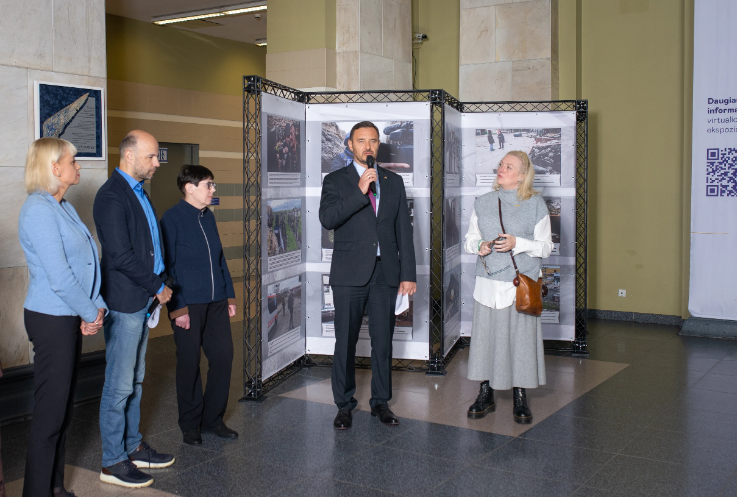Today, September 16, a photo exhibition about Ukrainian journalists during the war #OntheFrontlinesofTruth opened in Vilnius (Lithuania).
The exhibition was placed inside the railway station. It presents 30 photos of journalists working in many parts of Ukraine where fighting has been going on since the beginning of Russia’s full-scale invasion.
The purpose of the exhibition is to draw attention to the crimes against the media and journalists committed by the Russian Federation, as well as to show the extremely dangerous working conditions that journalists in Ukraine are facing.
The exhibition was organized by NGO Institute of Mass Information (IMI) and the international organization Internews with the support of Lietuvos Spaudos Fotografų Klubas.
“These impressive photos show the result of Russia’s brutal invasion of Ukraine and the conditions Ukrainian journalists face every day. In Ukraine, the number of reporters killed by Russian attacks continues to grow. These actions of Russia are war crimes, and we must do everything possible to bring the perpetrators to justice,” said IMI Executive Director Oksana Romaniuk.
During the opening ceremony, Ukrainian Ambassador to the Republic of Lithuania Petro Beshta expressed his solidarity with Ukrainian journalists. “These photos show how vital it is to support the work of journalists who are risking their lives on the front lines trying to document the war, trying to keep their fellow citizens informed. They are fighting a dictatorship and tyranny that aims to silence the media and destroy independent journalism,” he said.

As head of CSO Detector Media Natalya Lyhachova noted during the ceremony, “These photos have a special value, because they are a testament to the role of journalists in the war, to their emotions and resilience in such difficult conditions.”

Freelancer journalist Stas Kozlyuk, whose photo was among those presented at the exhibition, told Suspilne that the most difficult shooting of this war for him was filming on the Zhytomyr highway in April.
“It was filming on the Zhytomyr highway on April 2. My colleagues and I went there to film the liberated villages. We were told that there are locals somewhere who had been shot. We drove to the Zhytomyr highway, and it was a shock. Because there were dozens of burned and murdered civilians. And you can not be ready for this. For a while you just stand there and can’t bring yourself to do anything, because you’re trying to comprehend this level of cruelty. You try to find an answer to the question of why this happened, they were civilians, they were not combatants, they tried to save themselves, and the Russians killed them. And then you understand that it all must be filmed, recorded. This was the most difficult shooting of this war,” he said.

This is the second exhibition of photographic content. The first one was organized in June in Strasbourg (France) by the Institute of Mass Information, the Permanent Mission of Ukraine to the Council of Europe, the Ukrainian delegation to the Parliamentary Assembly of the Council of Europe, and PromoUkraïna.
Journalists sumbitted over 200 photos about their work to IMI; 30 of those have been chosen for presentation at the Vilnius exhibition.
Journalists Stas Kozliuk, Vyacheslav Mavrychev, Serhiy Nuzhnenko, Maria Malevska, Oleksandr Khomenko, Oleksandr Ratushnyak, Nastya Stanko, Maryan Kushnir, Alina Klymenko, Inna Varenytsya, Nikoletta Stoyanova, Andriy Kramchenkov, Anton Skyba, Oleh Petrasyuk, Vlad Musienko, Yuriy Rudenko, Oleksiy Bratuschak, Oleksandr Medvedev, Vyacheslav Ratynskyy, Stas Yurchenko, Bohdan Kutepov, Marcin Suder, Mstyslav Chernov, Nathan Vander Klippe provided their photos for the exhibition.
